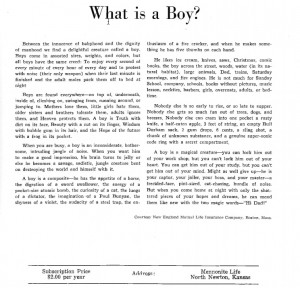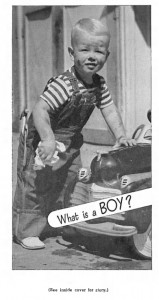Here is a longer version of an interview I did with with Margaret Waterman of BU Professor Voices on the results of the 3/15 primaries. As of this writing, the Missouri races have not been completed, but I'm looking at the current results and the New York Times Live Model.
We’ve had quite a few “Super Tuesdays” recently. You think this is the last one?
This is the final Super Tuesday of the season, although the primary season is far from over, and we have some important states coming up.
The concept of Super Tuesday originated with the first pile-up of not just a lot of primaries, but major ones, all happening on the same day in March. This year we saw “the” Super Tuesday, on March 1, but then on March 8 and 15 then we had Tuesdays with smaller numbers of states, but some really major ones. This is the last and pivotal Super Tuesday, although on April 26 we have a cluster including Pennsylvania and Maryland, which are large.
But look at where we are. Clinton now has 1561 delegates (without Missouri) to Sanders’ 800, including super delegates. If from now on Clinton nets exactly half the delegates at stake in every primary, it will take her until the beginning of June to win sufficient delegates, and with plenty to spare. But if the Democratic results follow the pattern we have seen, she will capture her needed delegates earlier. On the Republican side it is more complicated because there are still 2 opponents in play and there is an energetic movement against the frontrunner, but nothing suggests that Donald Trump’s march to the nomination can be stopped.
Nevertheless we shouldn’t underemphasize the importance of the campaigns still to go in battleground states. As they gain confidence we will see Donald Trump and Hillary Clinton pivoting more strongly to run against each other in some very important battleground states.
So what are the big results and big surprises, if any, this week? Let’s start with the Republicans.
The past week has seen an intensification of the anti-Trump campaigns owing largely to the way he has been encouraging violence among his supporters and how he set up a terribly scary and dangerous situation last Friday as he left his supporters and opponents to battle it out while he stayed away.
But the anti-Trump campaign has had no real effect on the outcome in terms of the delegate count. The biggest news of last night, other than the continuing progress of the Trump juggernaut, is that Marco Rubio’s candidacy is over. He suffered a very decisive defeat in his home state of Florida to Donald Trump and ended his campaign. John Kasich won his home state and is trying to make up a story about his road to the convention, but there is no way he can gather the delegates. The margin in Missouri between Trump and Cruz was super close this Super Tuesday III.
And on the Democratic side? The polls were predicting that it would be a good night for Hillary Clinton, but clearly no one seemed certain given the events of Michigan last week.
For the elections and polls nerds among us, it is worthwhile to look at some of the discussions in recent days in Nate Silver’s 538, the New York Times section The Upshot, and the Washington Post section, The Monkey Cage. All of these have had excellent analyses of what went wrong in the polls and predictions, and why they thought that unprecedented miscall would likely remain singular this week. They are great sources for data-based analysis, a welcome relief from punditry and advocacy.
This week, the polls and predictions were largely correct. Hillary Clinton took all of the races this week with a squeaker in Missouri. Her wins in Florida, North Carolina, and Ohio were decisive, and the Ohio one was especially important because Bernie Sanders said he could win it, and it is a big non-Southern state. In that respect, although it wasn’t a huge gap, Illinois was very important too. As with many other northern states, the advantage Clinton seemed to begin with narrowed as time when on, but the goal for primaries is winning more delegates than the other person.
What can we say about the base of support for Clinton and Sanders, and now that we might have a clearer picture of the finish line, what are the implications for the general election?
I’ll use the exit polls reported by CNN for this.
Bernie Sanders continued to have his biggest wins among young voters and Independents. His best strength is among people who are pretty new to electoral politics and to people who have not been much associated with the Democratic party. Of course he has himself been “associated” with Democrats, but has spent his entire political career as an Independent. For some people in the Democratic party that, of course, is an issue, because the point of the primary season is to pick the candidate of the party. The open primary system is very unusual in comparison with other countries, which usually require that to select a party’s candidates, you have to be part of that party.
Bernie Sanders also has an advantage among white men and in some states, but not all, white women. Hillary Clinton’s strength is greater in general among women and among African Americans. This has been consistent all through the primary season. Of course there are variations. In Florida, a big win for Clinton, white men favored Sanders 52%-46%. In Missouri white men favored Sanders 61%-38%. In Illinois white gave Sanders an even stronger lead, and white women favored Sanders by 2 percentage points. In North Carolina white men were the only group to give the nod to Sanders.
This week we also learned something about Latinos’ political perspectives. In Florida Clinton was the overwhelming favorite of Latinos, who are generally more associated with the Democratic than Republican party. It is important to bear in mind that the Latino community is extremely diverse in their national origins and class status. A lot of people think of Florida Latinos as entirely Cuban, but that’s not true, and especially lately the proportion of Puerto Ricans has risen sharply. But this is an important sign for fall elections, because Latinos are such important populations in some very key battleground states for Democrats, like New Mexico and California.
What about income and education? Bernie Sanders works very hard to paint his opponent as representing the 1%. How does that play with people of different class backgrounds?
The issue of class and economic standing is an especially important question given the emphasis of the last couple of weeks on trade. There are two different themes one might emphasize on trade treaties, and he paints them entirely as designed to benefit big business by allowing them to send their production overseas, “exporting jobs,” as opponents of freer trade have long said. The other way to look at the issue (and the reason a lot of supporters are in favor of freer trade pacts) is opening up markets for American goods, which stimulates production and jobs. But with the emphasis on the job export theme, on “the 1%” and campaign finance, Sanders has looked to gain support among those less well off.
The exit polls show a mixed picture, as we might imagine given the racial breakdown of the vote. In North Carolina Clinton and Sanders did roughly equally well among those earning less than $50K (slight edge to her), he had an edge among those earning $50-$100K, and she won among those earning more than $100K. In Illinois she won among those earning under $50K and over $100K, and he won the income bracket between $50-$100K. In Missouri he had an edge in that least well-off group and she did in the most well-off group and they split the middle group. In Florida she took every income group decisively. So the attack on her links to the 1%, to Wall Street, and the like is making a difference, but it is not making any simple difference in slicing up the class and income pie.
There is always a lot of side commentary on social media going on during these long primary nights. Were there any interesting sideshows?
The highlight sideshow of the evening, hands down, started when Joe Scarborough, Morning Joe co-host, took the time during Hillary Clinton’s victory speech to tweet:

Other male commentators complained about her shouting. That’s not a good move. Hardly a woman has managed to get through life without being told by some guy to smile … especially in the middle of a serious discussion. The Twitter feed lit up with retorts, jokes, snarky replies. Various folks showed pictures of other candidates and told them to smile. Someone put up a picture of Mr. Scarborough and asked him to smile. He seemed to get a little

Hmmm. Fake outrage. In any case, some wondered why other candidates aren’t told to be quiet and smile. Indeed.
http://bit.ly/1Z0L4io @VSapiro







